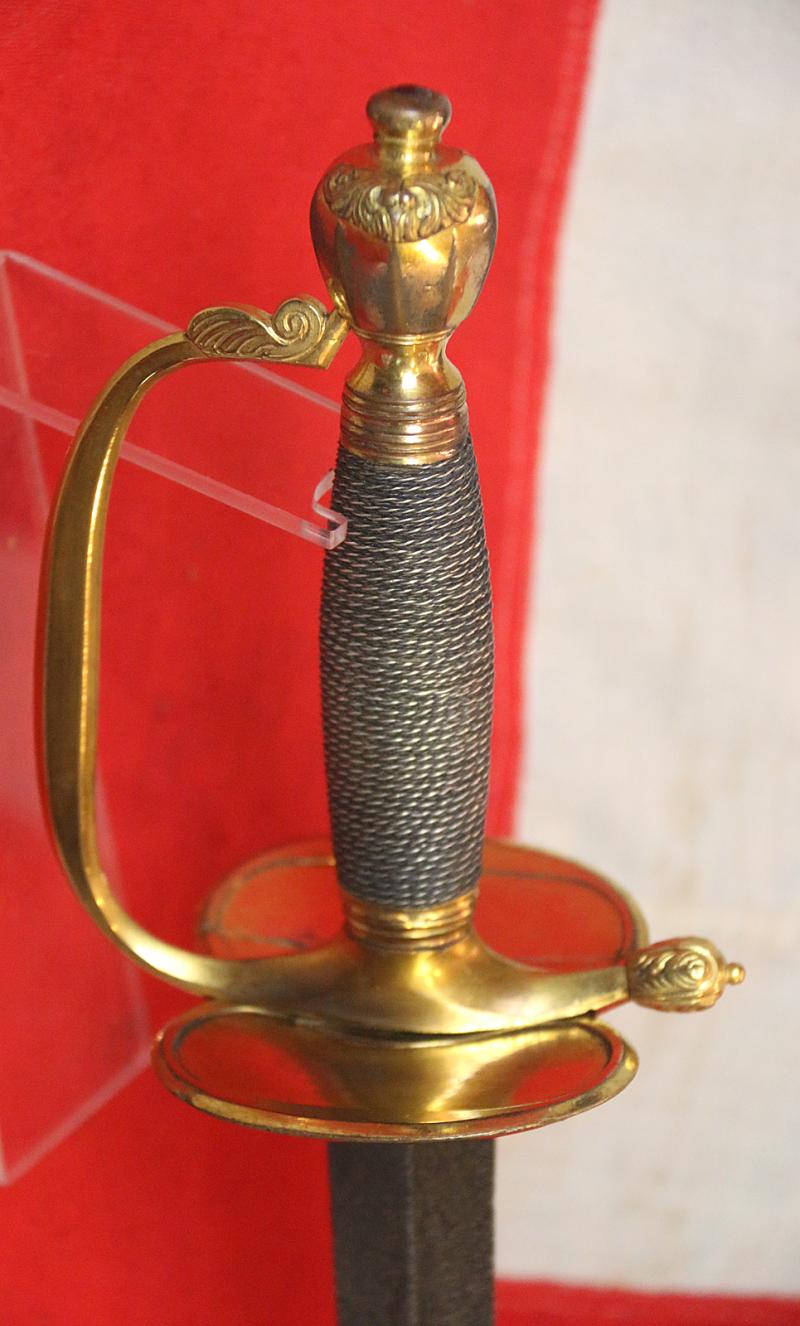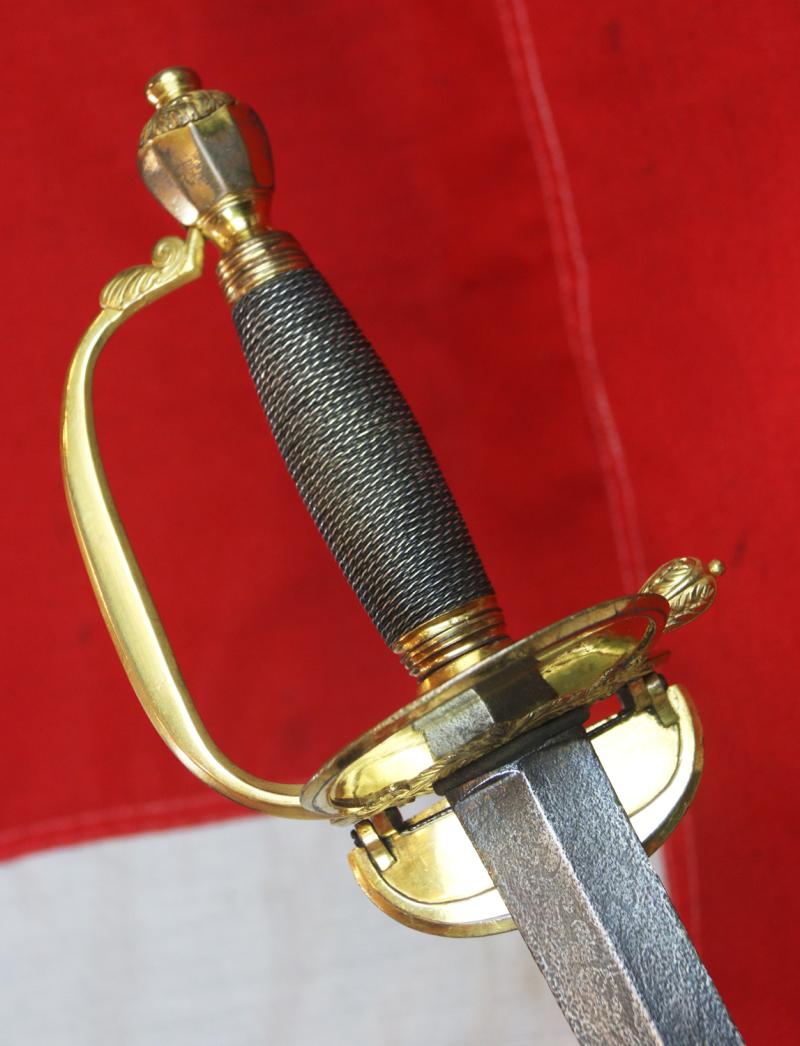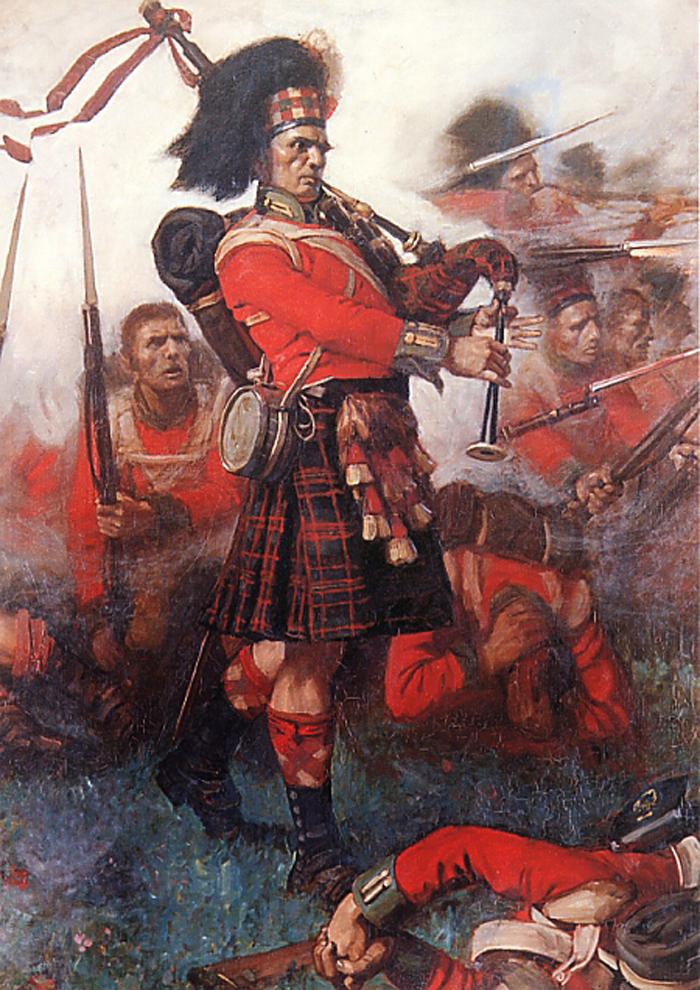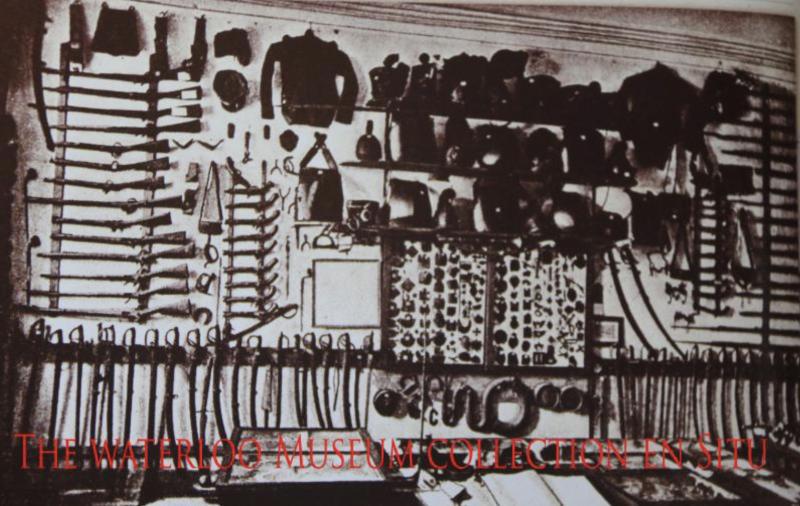A Simply Stunning Most Rare Napoleonic Wars Type of a 1796 Infantry Officer's Sword, Monogrammed With Its Owner's Title and Monogram, Plus His Patriotic Motto “The Love Of, My Country, & Freedom” Etched Upon The Acutely Tapering “Needle Point’ Blade.
A most rare blade type, modelled on a 15th-16th century needle point double edged broadsword form known as the type XVII.
The mercurial gilt hilt is near to mint as possible, and it has a folding guard, but with an extraordinarily rare form of blued steel hinge arrangement. The diamond section blade has overall salt and pepper pitting, and bears, in fine etching, the owners title initial, H above his monogram, A. A., and below the monogram, is a Tarlton helmet, and below that a patriotic motto, within three scrolls, The Love Of, My Country, & Freedom. A most unusual form of bespoke blade for the 1796 infantry pattern sword, far better for combat than the standard single edged straight blade, perfect if one is a trained swordsman in the art of hand to hand rapier combat. Perfect for the thrust due to its strength and rigidity, ideal for the cut being double edged. And superb for the parry being quatrefoil, which gives it extra strength. An officer trained to use such a sword would be a formidable foe indeed. One can easily see this by simply by looking at its full length profile in the photographs. It’s appearance of a rigid reinforced needle is incredibly impressive.
After considerable research this incredible sword may indeed have been most likely commissioned for the Hon Alexander Abercromby, we can find no other British army serving officer with this rank and initials. He first served in the Gordon Highlanders, then he transferred to command the 29th Foot, the North Gloucestershires, in Busaco in the Peninsular War, then in 1815 he served under Wellington as Wellington's Assistant Quartermaster General for the 2nd Foot Guards, at Quatre Bras and Waterloo, in the War of 100 Days, Napoleon's last battles and his final foiled attempt to regain his empire.
Born on 4 March 1784, Abercromby entered the army at an early age, and served as a volunteer with the 92nd Regiment, the Gordon Highlanders, in the expedition to the Helder in 1799. He soon obtained a commission, and saw service with his regiment in Egypt. He was appointed aide-de-camp to his father's old lieutenant and friend, Sir John Moore, during his command in Sicily in 1806, but was not with him in Spain.
Like his brother, Sir John, he was rapidly promoted, and in 1808, when only twenty-four, became lieutenant-colonel of the 28th Regiment. He accompanied his regiment when it was sent to Portugal to reinforce Lord Wellesley after the battle of Talavera. He commanded it at the battle of Busaco, and in the lines of Torres Vedras, and as senior colonel had the good fortune to command his brigade at the battle of Albuera. His services there were very conspicuous, and his brigade has been immortalised by Napier. He was soon superseded, but commanded his regiment at the surprise of Arroyo de Molinos and the storming of the forts at Almaraz.
In 1812 he was removed to the staff of the army, and was present as assistant-quartermaster-general at the battles of Vittoria, the Pyrenees, and Orthes. He served in the same capacity in 1815, and was present at Quatre-Bras, Waterloo, and the storming of Péronne. Péronne, on the banks of the Somme, was captured on 26 June during the Allied advance on Paris following the victory at Waterloo
He was the son of Lieutenant General Sir Ralph Abercromby KB (7 October 1734 – 28 March 1801) who was a British soldier and politician. He rose to the rank of lieutenant-general in the British Army, was appointed Governor of Trinidad, served as Commander-in-Chief, Ireland, and was noted for his services during the French Revolutionary Wars, ultimately in the Egyptian campaign. His strategies are ranked amongst the most daring and brilliant exploits of the British army. No doubt Alexander gained his considerable combat tactical skills from his father. To be Colonel of a regiment at 24 and to be in command of a battle was no mean feat based entirely on merit.
For his active services he was promoted to a colonelcy in the 2nd or Coldstream Guards,
The last photo in the gallery of the other 10th hussars sword shows a photograph of one section of the collection in the museum of Waterloo, taken in around 1900, showing all the weapons of Waterloo en situ, including all the protagonists {British, French, Prussian and Belgian muskets, swords, pistols, armour uniforms, etc}. The museum was founded and owned by a veteran of the 7th Hussars that fought at Waterloo.
Code: 24749










